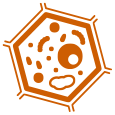
Cambridge Healthtech Institute’s 2nd Annual
Spatial Biology
Adding a New Dimension to Multi-Omic Analysis
MARCH 6 - 7, 2023 ALL TIMES PST
Emerging technologies in spatial biology promise to enable better understanding of biological pathways, discovery of new biomarkers and drug targets, and more insightful translational research. Cambridge Healthtech Institute’s 2nd Annual Spatial
Biology meeting will explore the latest technologies and research in using spatial multi-omics tools to uncover molecular insights in oncology, neurology, immunology, and more.